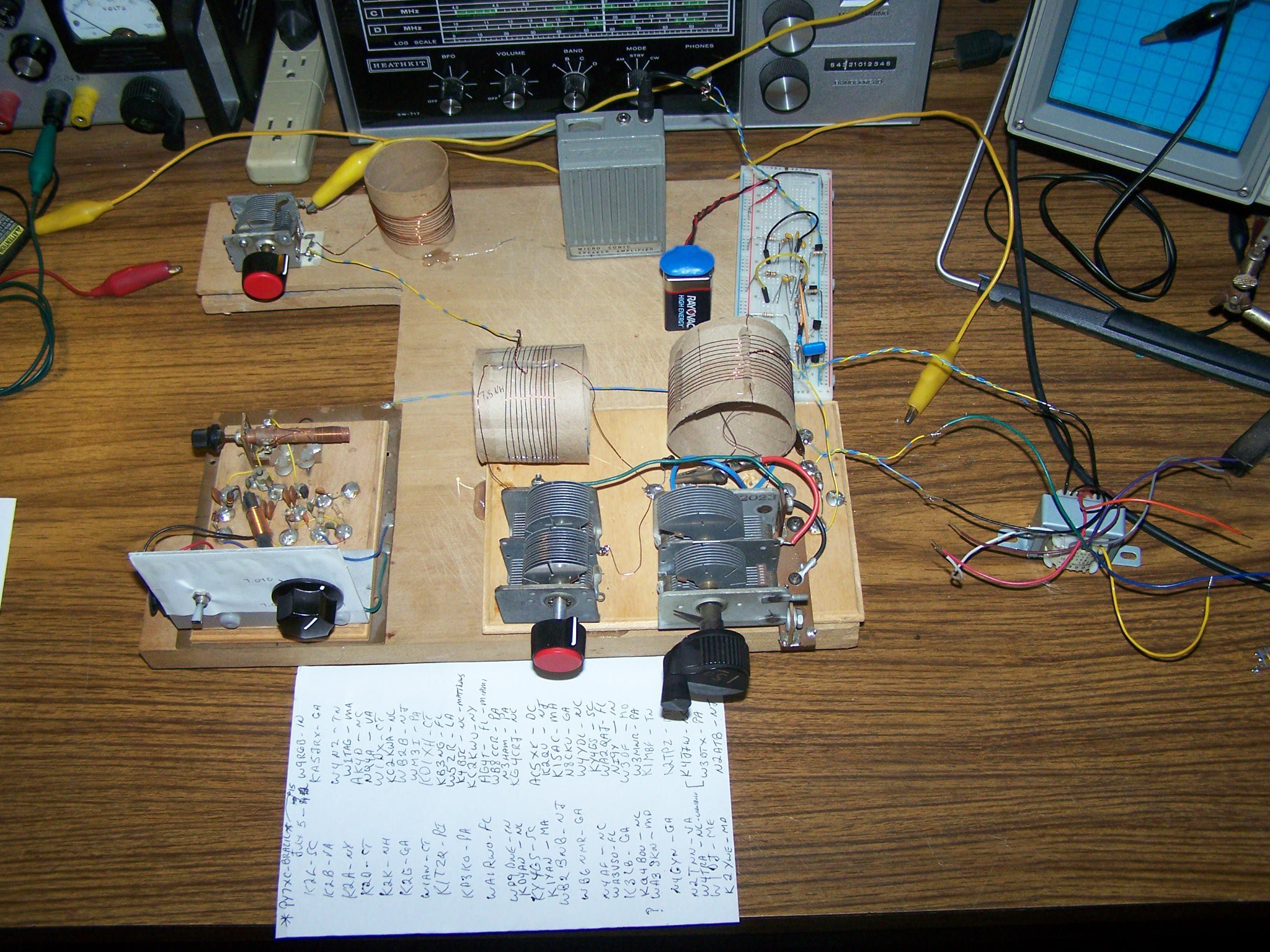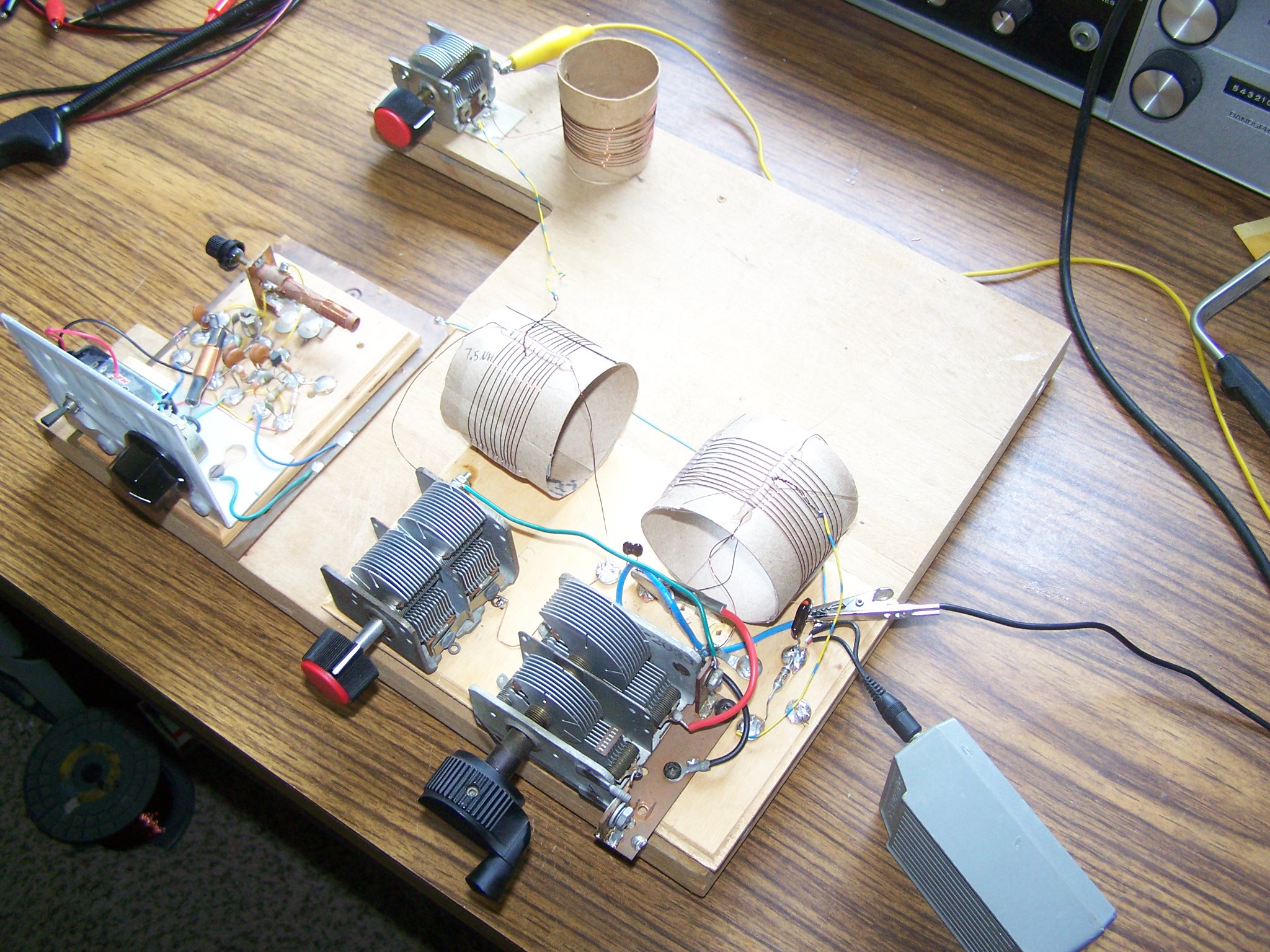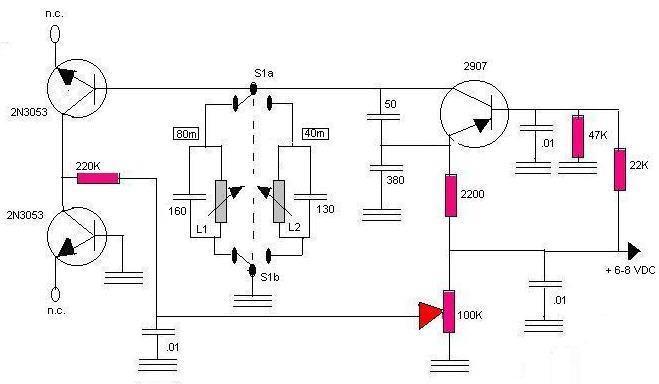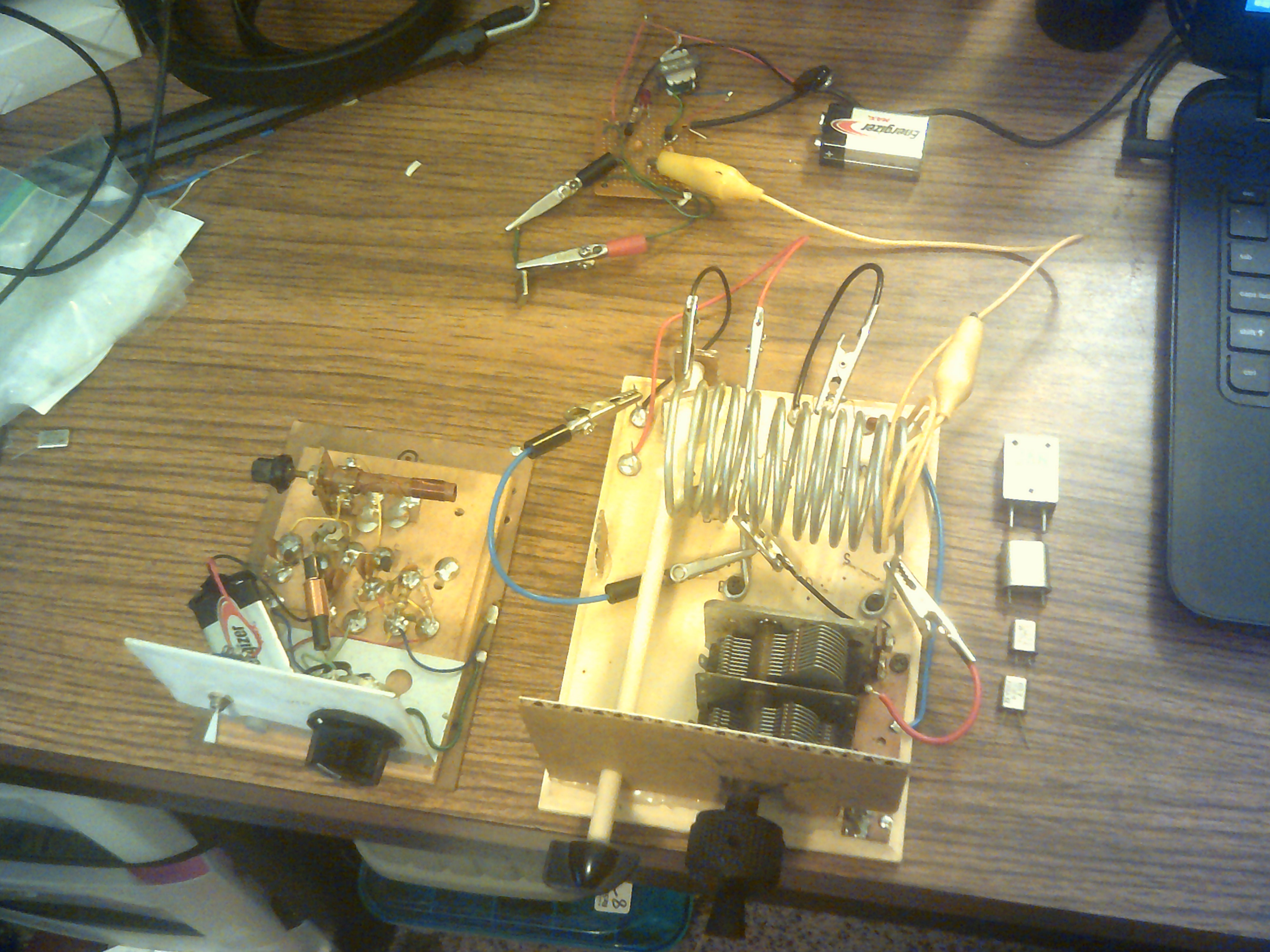-
Better Than I Thought
07/16/2023 at 00:48 • 0 commentsJuly 15, 2023 - This little hay wired receiver is better than I was expecting. Between July 5 and today I have copied on 40M CW, 61 stations from States all along the east coast from Florida to Maine and west to Indiana with the best being PY7XC in Brazil. Remember that this receiver is just a crystal receiver with a Local Oscillator loose coupled and a lot of audio amplification and no RF gain stages at all. The antenna is just a 35 foot wire and NO ground connected. The CW filter on the proto board helps a lot as well as the wave trap on the antenna input. I also made a slight improvement by adding a Bogan T725 audio transformer between the detector and the CW filter. Direct Conversion at its most sloppy but it works so well.
-
A Busy Morning On 40M
07/12/2023 at 13:47 • 0 commentsJuly 12, 2023 - A very active Wednesday morning on 40M CW. I think this is due to the Minitest 40 contest as usually 40M at mid morning is usually dead when it comes to receiving on my modified crystal radio. Note that I have added a CW filter that peaks at 700Hz but is still a bit broad but it does reduce the highs and lows nicely. I have a slight hum that I am working on. I need a good ground rod but can not buy one until next week, otherwise I am picking up power line hum through the various exposed wires in my lab ;-)
-
Filtering the DC Receiver Input
07/05/2023 at 17:49 • 0 commentsJuly 5, 2023
The last post mentioned adding a Wave Stop filter to the antenna input. Basic cap and inductor in parallel inserted in series with the antenna as pictured in the upper left of the wood chassis. Tune the cap to trap or stop a unwanted signal from reaching the main tuner and detector.
-
Super Basic Direct Conversion for 40M CW
06/30/2023 at 00:15 • 4 commentsJuly 5, 2023
Here is a receiver that I decided to build just this week after I had first used this same circuit years ago. It is about as simple as you can get and still receive decent CW on either the 80M or 40M bands. If SW AM stations bleed in then using T50-2 toroids for the coils increases the Q and helps a lot.
A AM shortwave broadcast from Radio Havana was getting past the tuner at night so I added a simple wave trap to the antenna line. So far so good. Next will be a audio filter to narrow the audio bandwidth a bit to make listening to CW easier when a lot of signals are close to each other.
The circuit is from the following site and I highly recommend giving it a try. https://www.qsl.net/kc6wdk/QRP/
-
A slight flash back
03/05/2020 at 22:10 • 0 commentsBack a few years ago I stepped up my game and wired up a DSB double sideband tranceiver that actually worked quite well and I made daily net contacts on 75 meters for almost a year with it. The circuit is the Wee Willy and can be found online. Output was about 1 watt.
-
Receiver VFO / BFO
03/05/2020 at 14:51 • 0 commentsWell, you could call the oscillator I am using a BFO or a VFO ( Actually both ). Depends on how you look at it. I have used this circuit and actual build for many years without any problems. Not really state of today's art and it sure is not stable compared to a lot of other circuits out there but it works with just a hand full of parts and never quits.
Here is the circuit followed by the web page link.
![]()
-
Test Setup
03/04/2020 at 20:08 • 0 commentsWell, this is a cleaned up setup. At the rear is a perf board crystal controlled oscillator that can be modulated by the laptop if needed and is loose coupled to the radio. The circuit on the left is the RF BFO and is also loose coupled via the slug tuned coil. On the right are a few of the crystals used on the signal generator. Not shown is the small earphone I use to listen to the audio output but that just clips onto the radio. The BFO is varicap tuned on its front panel and has a 15 KHz range from about 7.03 to 7.045 MHz.
The BFO circuit is at least 15 years old and was part of a much older crystal radio receiver for 40M CW. In this case the crystal radio becomes a very basic Direct Conversion receiver. Still no RF or AF amplification but I might add a LM386 audio amp for speaker listening. -
Time for initial tests
02/29/2020 at 12:04 • 0 commentsWell, I have finished the construction of the radio and since I have yet to put up a decent antenna, I want to at least test to see if the tuned circuit and detector will sniff out a RF source of some kind.
I do have a simple crystal test circuit wired up on perf board from years ago and if I have it oscillate at say 7.04 MHZ and modulate the RF, I should be able to hear the modulation in the earphone.
Going old school and brute force method and modulate the Oscillator by placing a small audio transformer in the 9 volt power lead then feed the transformer with a audio source from the laptop. Not the best way to do it but it is what it is :-)
Two Hours Later.......
Success, I was able to generate a modulated RF signal at 6, 7 and 11.155 MHZ and calibrate a rough dial. The tuning was fairly sharp and the variable coupler works like it should as well :-)
Shortwave Crystal Radio - A blast from my past
Building and tinkering with crystal radios goes back to my childhood of the late 1960's and coming round again.
 Dr. Cockroach
Dr. Cockroach


